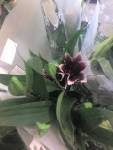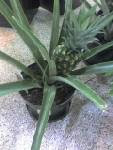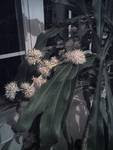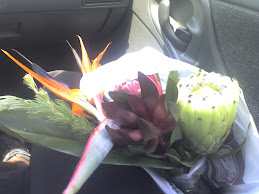Friday, December 21, 2007
Ginkgo Biloba
Ginkko is cultivated and has culinary and medicinal uses. One must be careful with this plant as too much can cause poisoning or problems with blood circulation. Go here to learn more.
Thursday, December 20, 2007
Star Gazer

The Star Gazer belongs in the lilly family. Wikipedia sates that the genus Lilium are herbaceous flowering plants normally growing from bulbs, comprising a genus of about 110 species in the lily family, Liliaceae.
They are important as large showy flowering garden plants, and in literature. Some of the bulbs have been consumed by people. The species in this genus are the true lilies, while other plants with lily in the common name are related to other groups of plants. Go here to learn more about beautiful lilium .
Wednesday, December 19, 2007
Evergreens
 An evergreen plant is a plant that has leaves all year round, according to Wikipedia. This contrasts with deciduous plants, which completely lose all their foliage for part of the year. The tree keeps its leaves all year round though dropping their leaves and instantly re growing them.
An evergreen plant is a plant that has leaves all year round, according to Wikipedia. This contrasts with deciduous plants, which completely lose all their foliage for part of the year. The tree keeps its leaves all year round though dropping their leaves and instantly re growing them. Leaf persistence in evergreen plants may vary from only a few months (with new leaves constantly being grown and old ones shed), up to a maximum of 5 years in Great Basin Bristlecone Pine Pinus longaeva.
Go here to learn more about these lovely plants.
Tuesday, December 18, 2007
Azaleas

Azaleas are flowering shrubs making up part of the genus Rhododendron, according to Wikipedia.
One major difference between azaleas and the rest of the rhododendron family is their size. Another is their flower growth; rhododendrons grow their flowers in stripers, while most azaleas have terminal blooms (one flower per flower stem). However, they have so many stems that during the flowering season they are a solid mass of colour.
Azaleas are recognised by these flowers blooming all at once, in a showy display for a month or two in spring. The exception to this rule is a small group of azaleas which grow their flowers in tight terminal clusters. Go here to learn more about this lovely plant.
Monday, December 17, 2007
Fungus

Have you seen something like this picture in your yard? If so, you were looking at fungus, and they are common. Many of them are known as mushroom.
According to Wikipedia, Fungi are a kingdom of eukaryotic organisms. The fungi are heterotrophic organisms characterized by a chitinous cell wall. Some fungal species also grow as single cells. Sexual and asexual reproduction is commonly via spores, often produced on specialized structures or in fruiting bodies. Some fungal species have lost the ability to form specialized reproductive structures, and propagate solely by vegetative growth.
Yeasts, molds, and mushrooms are examples of fungi. The fungi are a monophyletic group that is phylogenetically clearly distinct from the morphologically similar slime molds (myxomycetes) and water molds (oomycetes). The fungi are more closely related to animals than plants, yet the discipline of biology devoted to the study of fungi, known as mycology, often falls under a branch of botany. Go here to learn more.
Friday, December 14, 2007
Lillys

Lillys are gorgeous flowers. They adorn gardens in the spring and summer. They are perfect for giving away to express one's love or affection. According to Wikipedia, The Liliaceae, or the Lily Family, is a family of monocotyledons in the order Liliales. Plants in this family have linear leaves, mostly with parallel veins, and flower parts in threes.
Many plants in the Liliaceae are important ornamental plants, widely grown for their attractive flowers. Many plants in the family are poisonous if eaten. A floral pattern said to be based on a lily or lily-like flower is used in heraldry; see Fleur-de-lis.
Go here to learn more.
Thursday, December 13, 2007
Freesia

Freesia is a flowering plant. Wikipedia states that it is a genus of 14-16 species of flowering plants in the family Iridaceae, native to Africa. Of the 14 species, 12 are native to Cape Province, South Africa, the remaining two to tropical Africa, one species extending north of the equator to Sudan.
The genus was named in honor of Friedrich Heinrich Theodor Freese (1795-1876), German physician. They are herbaceous plants which grow from a corm 1-2.5 cm diameter, which sends up a tuft of narrow leaves 10-30 cm long, and a sparsely branched stem 10-40 cm tall bearing a few leaves and a loose one-sided spike of fragrant narrowly funnel-shaped flowers. Go here to learn more. To learn more, go here.
Wednesday, December 12, 2007
Clover
 Wikipedia states that the Clover (Trifolium) is a genus of about 300 species of plants in the pea family Fabaceae. The genus has a cosmopolitan distribution; the highest diversity is found in the temperate Northern Hemisphere, but many species also occur in South America and Africa, including at high altitudes on mountains in the tropics.
Wikipedia states that the Clover (Trifolium) is a genus of about 300 species of plants in the pea family Fabaceae. The genus has a cosmopolitan distribution; the highest diversity is found in the temperate Northern Hemisphere, but many species also occur in South America and Africa, including at high altitudes on mountains in the tropics. They are small annual, biennial, or short-lived perennial herbaceous plants. The leaves are trifoliate (rarely 5- or 7-foliate), with stipules adnate to the leaf-stalk, and heads or dense spikes of small red, purple, white, or yellow flowers; the small, few-seeded pods are enclosed in the calyx. Go here to learn more.
Tuesday, December 11, 2007
Dandelion

Wikipedia states that the common name Dandelion is given to species of the genus Taraxacum, a large genus of flowering plants in the family Asteraceae. In the Asteraceae (formerly Compositae) the 'flowers' are morphologically a composite flower head consisting of many tiny flowers called florets. The dandelion is native to Europe and Asia, and has been introduced to many other places.
n northern areas and places where the dandelion is not native, it has become a weedy species, exploiting disturbed ground in human environments. Taraxacum species reproduce asexually by means of apomixis and seed production commonly occurs without pollination.
Did you know that Dandelion is eaten in some countries? Go here to learn more about this useful plant.
Monday, December 10, 2007
Alstroemeria Lily

Alstroemeria Lilly is a beautiful flowering plant that grows in a variety of colors.
According to Wikipedia, Alstroemeria (syn. Alstremeria), commonly called the Peruvian Lily or Lily of the Incas, is a South American genus of about 50 species of flowering plants. Almost all of the species are restricted to one of two distinct centers of diversity, one in central Chile, the other in eastern Brazil.
The plants are distinctive vegetatively, with a rootstock consisting of a slender rhizome or group of rhizomes (the "crown"). Storage roots consist of sausage-like water storing structures "suspended" from the rhizome by major roots. In this way the root system resembles that of dahlias. Above-ground shoots may be very short in some alpine Andean species (a few cm tall) or up to about 1.5 m tall in other species.
Friday, December 7, 2007
The Spider Plant

The Spider Plant is a pretty neat plant. It is probably obvious how it got it's name. The leaves of the plant sprout out like spider legs. Wikipedia states that the Spider Plant, Chlorophytum comosum, is a species of Chlorophytum native to South Africa. The plant has long narrow leaves that area 20-40 cm long and 5-20 mm broad. They produce stolons with small white floweres and baby plantlets.
It is a very popular houseplant. The most widely grown is the variegated cultivar 'Variegatum', with one or two broad yellowish-white bands running along the length of each leaf, but natural, all-green plants are also grown. The Spider Plant is very easy to propagate. They can be propagated by splitting its main rosette, or more easily by removing plantlets from the stolons and potting them separately or putting them in a glass of water.
It is an especially popular plant with beginners, as it is easy to grow and propagate and is very tolerant of neglect, being able to thrive in nearly any type of condition. It has been shown to reduce indoor air pollution. Go here to learn more about this neat plant.Thursday, December 6, 2007
African Violets

African Violets are lovely plants that adorn many homes. They come in an array of colors from white, red, pink, and purple. Wikipedia states that Saintpaulia, commonly known as African violet, is a genus of 6 species of herbaceous perennial flowering plants in the family Gesneriaceae. They are native to Tanzania and adjacent southeastern Kenya in eastern tropical Africa, with a concentration of species in the Nguru mountains of Tanzania.
The common name was given due to a superficial resemblance to true violets (Viola, family Violaceae). Saintpaulias grow from 6-15 cm tall and can be anywhere from 6-30 cm wide. The leaves are rounded to oval, 2.5-8.5 cm long with a 2-10 cm petiole, finely hairy, and with a fleshy texture. The flowers are 2-3 cm diameter, with a five-lobed velvety corolla ("petals"), and grow in clusters of 3-10 or more on slender stalks (peduncles). Go here to learn more about these lovely plants.
Wednesday, December 5, 2007
Pineapple

The pineapple is a tropical plant. It is delicious to eat in fruit salads and desserts. According to Wikipedia, the pineapple (Ananas comosus) is probably native to Uruguay, Brazil or Paraguay. It is a medium tall (1–1.5 m) herbaceous perennial plant with 30 or more trough-shaped and pointed leaves 30–100 cm long, surrounding a thick stem.
The pineapple is an example of a multiple fruit: multiple, spirally-arranged flowers along the axis each produce a fleshy fruit that becomes pressed against the fruits of adjacent flowers, forming what appears to be a single fleshy fruit. The leaves of the cultivar 'Smooth Cayenne' mostly lack spines except at the leaf tip, but the cultivars 'Spanish' and 'Queen' have large spines along the leaf margins. Pineapples are the only bromeliad fruit in widespread cultivation. Go here to learn more about this citrus plant.
Tuesday, December 4, 2007
Weeping Willow
 The Weeping Willow is a beautiful tree that adorns many lawns. Its leaves or like strings that hang and swing with the breeze. I suppose it got its name by its image that appears as a "weeping" tree. Wikipedia states that Willows are a genus of around 400 species of deciduous trees and shrubs, found primarily on moist soils in cold and temperate regions of the Northern Hemisphere. Some of the shrub and smaller tree species may also be known by the common names osier and sallow.
The Weeping Willow is a beautiful tree that adorns many lawns. Its leaves or like strings that hang and swing with the breeze. I suppose it got its name by its image that appears as a "weeping" tree. Wikipedia states that Willows are a genus of around 400 species of deciduous trees and shrubs, found primarily on moist soils in cold and temperate regions of the Northern Hemisphere. Some of the shrub and smaller tree species may also be known by the common names osier and sallow.Some willows, particularly arctic and alpine species, are very small; the Dwarf Willow (Salix herbacea ) rarely exceeds 6 cm in height, though spreading widely across the ground.Willows are very cross-fertile and numerous hybrids occur, both naturally occurring and in cultivation. You can learn more about these fascinating trees here.
Monday, December 3, 2007
Indoor Palm Plant

This indoor palm plant has amazed me. After several years of having this plant, it finally blooms two exotic stem of flowers. Each stem has balls of spiked bulbs which burst open to reveal an amazing scent.
This sweet smell similar to lavender lingered throughout the house for several days. Initially, I did not know where the sweet smell came from, then I walked into the sun room and figured it out.
I believe this is a Caribbean palm. Go here to learn more about these amazing plants.
